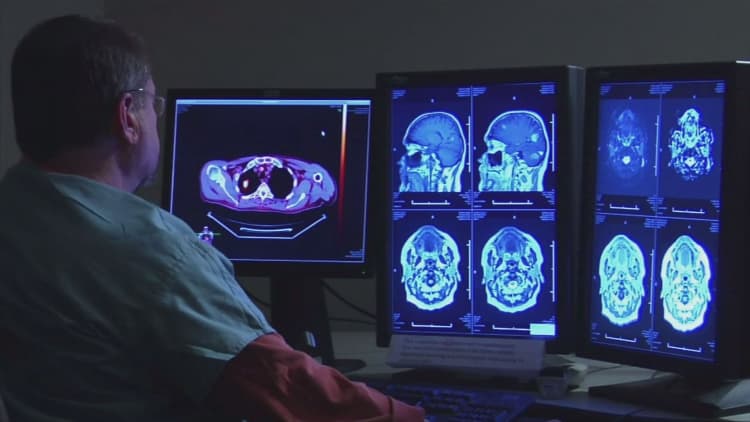
The injection of modified adult human stem cells "into the brains of chronic stroke patients" has led to promising results, a "small" clinical trial led by researchers at the Stanford University School of Medicine has shown.
According to a news release from Stanford on Thursday, the procedure – which involved drilling a hole into the skulls of 18 patients and then injecting stem cells into their brains using a syringe – helped restore patients' motor function.
The majority of the patients in the trial had their strokes "at least a full year" before the trial took place, Stanford said. The trial's results were published online in the journal Stroke.
Stroke is responsible for the deaths of around 130,000 people in the U.S. every year, according to the Centers for Disease Control and Prevention (CDC). A stroke takes place when either a "clot blocks the blood supply to the brain or when a blood vessel in the brain bursts", the CDC says.
"This was just a single trial, and a small one," Gary Steinberg, the chair of neurosurgery at Stanford who led the study, said in a statement. "It was designed primarily to test the procedure's safety," Steinberg added.
"But patients improved by several standard measures, and their improvement was not only statistically significant, but clinically meaningful. Their ability to move around has recovered visibly. That's unprecedented. At six months out from a stroke, you don't expect to see any further recovery."
Steinberg operated on 12 of the patients, with the other procedures taking place at the University of Pittsburgh.
One patient, 36-year-old Sonia Olea Coontz, said that her limbs "woke up" after the procedure, according to the Stanford press release.
"This wasn't just, 'They couldn't move their thumb, and now they can.' Patients who were in wheelchairs are walking now," Steinberg went on to add.
While the stem cells did not survive in patients' brains for more than a month or so, Steinberg said that their recovery was "sustained for greater than one year and, in some cases now, more than two years."
What was striking about the trial was both the lack of significant side effects from the stem cells, as well as the fact that a patient's improvement did not seem to depend on their age.
"Older people tend not to respond to treatment as well, but here we see 70-year-olds recovering substantially," Steinberg added.
"This could revolutionize our concept of what happens after not only stroke, but traumatic brain injury and even neurodegenerative disorders," he said. "The notion was that once the brain is injured, it doesn't recover — you're stuck with it. But if we can figure out how to jump-start these damaged brain circuits, we can change the whole effect."
Going forward, Stanford said that a "randomized, double-blinded multicenter phase-2b trial aiming to enroll 156 chronic stroke patients," was currently looking to recruit patients.


